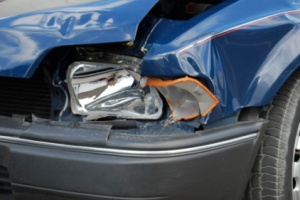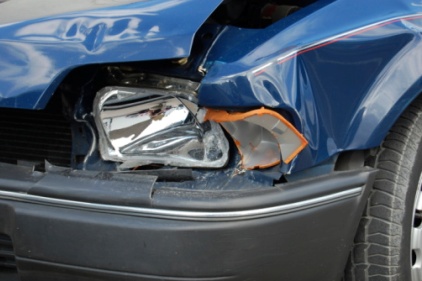 The National Highway Traffic Safety Administration says it will add two cutting-edge automatic emergency braking systems to the recommended advanced safety features included under its New Car Assessment Program (NCAP).
The National Highway Traffic Safety Administration says it will add two cutting-edge automatic emergency braking systems to the recommended advanced safety features included under its New Car Assessment Program (NCAP).
The additions of crash imminent braking (CIB) and dynamic brake support (DBS) is the latest in what the NHTSA says is a long history of safety innovations, which is covered in a new report that uses data from the agency's Fatal Accident Reporting System to create a statistical model that estimated safety technologies have saved 613,501 lives since 1960.
"Today marks an enormous leap in the evolution of auto safety by encouraging adoption of new technologies to keep drivers and their passengers safe on our roads," said U.S. Transportation Secretary Anthony Foxx. "I want this Department, the entire automotive industry, and other innovators to keep raising the bar on safety like we are doing now."
Rear-end collisions
According to NHTSA data, one-third of all police-reported crashes in 2013 involved a rear-end collision with another vehicle at the start of the crash. The agency also found that a large number of drivers involved in rear-end crashes either did not apply the brakes at all or did not apply the brakes fully prior to the crash. Crash imminent braking and dynamic brake support systems can intervene by automatically applying the vehicle's brakes or supplementing the driver's braking effort to mitigate the severity of the crash or to avoid it altogether.
These AEB systems, along with promising innovations such as vehicle-to-vehicle communications (V2V) and automated vehicle technologies hold great promise to save even more lives and prevent even more crashes, building upon the successes of crashworthiness and crash avoidance technologies currently available in vehicles today. As these technologies mature, NHSTA will continue to accelerate its push on innovative and effective solutions to reduce the staggering toll of motor vehicle crashes in the U.S. through our research, regulatory, and consumer information programs.
NCAP provides consumers with a checklist of advanced technology features demonstrated to improve safety. The checklist gives consumers a quick and easy way to compare the availability of safety features across models. NCAP currently identifies three Recommended Advanced Technology Features that also help drivers avoid or mitigate crashes: forward collision warning, lane departure warning and rearview video systems. Vehicles with Recommended Advanced Technology Features already included under NCAP can be viewed on www.safercar.gov. The site also includes NHTSA's widely known 5-Star Safety Ratings, which measure the crashworthiness and rollover safety of vehicles.
View NHTSA's Request for Comments notice to add Automatic Emergency Braking to the NCAP list of Recommended Advanced Technology Features.
View NHTSA's "Lives Saved by Vehicle Safety Technologies and Associated Federal Motor Vehicle Safety Standards, 1960 to 2012" report.
View NHTSA's Automatic Emergency Braking System Research Report released in August 2014.
View a Timeline of Federal Motor Vehicle Safety Standards and the Fact Sheet on Lives Saved by Vehicle Safety Technologies.
View NHTSA's Preliminary Statement of Policy Concerning Automated Vehicles.
Background on Vehicle Safety Technologies
Seat belts – Seat belts are the best defense for preventing death and injury in a crash. Seat belts are designed to keep occupants within the vehicle, close to their original seating position, and, if possible, prevent occupants from contacting harmful interior surfaces or one another. NHTSA has required three-point seat belts in front seat positions for decades and its updated frontal impact rule as well as New Car Assessment Program (NCAP) prompted auto manufacturers to install advanced seat belt designs that included pretensioners and force limiting technology. More recently, three-point belts were mandated in all rear seat positions including the center rear seat position to better protect children.
From 1960 through 2012, seat belts saved more than 330,000 lives — about half of the lives saved during that time period. Overall and annually, seat belts are the largest contributors to the number of lives saved.
Air bags – Air bags reduce the chance that an occupant's upper body or head will strike the vehicle's interior during a crash. Frontal air bags, combined with lap/shoulder belts, offer effective crash protection for passenger vehicle occupants. Frontal air bags, for the driver and right front passenger positions have been standard equipment in all passenger cars since model year 1998 and all SUVs, pickup trucks and vans since model year 1999. In 2000, NHTSA upgraded its air bag requirements in passenger cars and light trucks by requiring "advanced air bags." The upgrade maintained crash protection for occupants of all sizes, belted and unbelted while minimizing the risks posed by air bags to infants, children, and other vulnerable occupants. Compliance with the new requirements started with a phase-in beginning with the 2004 model year and since September 2006, all vehicles have been equipped with advanced air bags. NHTSA estimates that frontal air bags have saved nearly 43,000 lives overall.
In addition, NHTSA's updated side impact and new ejection mitigation rules are driving auto manufacturers to install more side airbags as well as larger side window curtain airbags to protect occupants in side impact and rollover crashes. When fully implemented, several thousand more lives will be saved due to the improved protection.
Electronic Stability Control (ESC) – ESC detects when a vehicle is about to lose traction and automatically applies the brakes to individual wheels and/or reduces engine torque to help the driver stay on course. It is a highly effective crash avoidance technology, particularly in preventing rollover crashes. In April 2007, NHTSA issued a final rule requiring ESC in all new light vehicles, beginning with phased in requirements for model year 2009 vehicles. ESC has been standard in all new vehicles since model year 2012. While one of the relatively newer technologies that's standard throughout the light vehicle fleet, ESC has saved almost 6,200 lives.
Vehicle-to-Vehicle Communications (V2V) – V2V is a crash avoidance technology that relies on communication of basic safety information between nearby vehicles to potentially warn drivers about dangerous situations that could lead to a crash. V2V technology has the potential to save thousands of lives each year. In August of 2014, NHTSA issued an advance notice of proposed rulemaking (ANPRM) and a supporting comprehensive research report on V2V communications technology.
Automatic Emergency Braking (AEB) – AEB system technologies are a subset of what NHTSA refers to as Forward Crash Avoidance and Mitigation (FCAM) systems. Whereas the FCAM designation includes systems that provide Forward Collision Warning (FCW) only, AEB systems such as Crash Imminent Braking (CIB) and Dynamic Brake Support (DBS) are specifically designed to help drivers avoid, or mitigate the severity of, rear-end crashes. CIB systems provide automatic braking when forward-looking sensors indicate that a crash is imminent and the driver has not braked, whereas DBS systems provide supplemental braking when sensors determine that driver-applied braking is insufficient to avoid an imminent crash.

